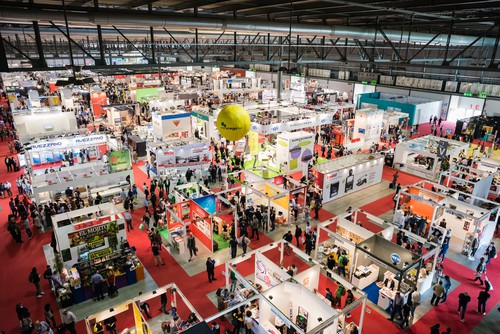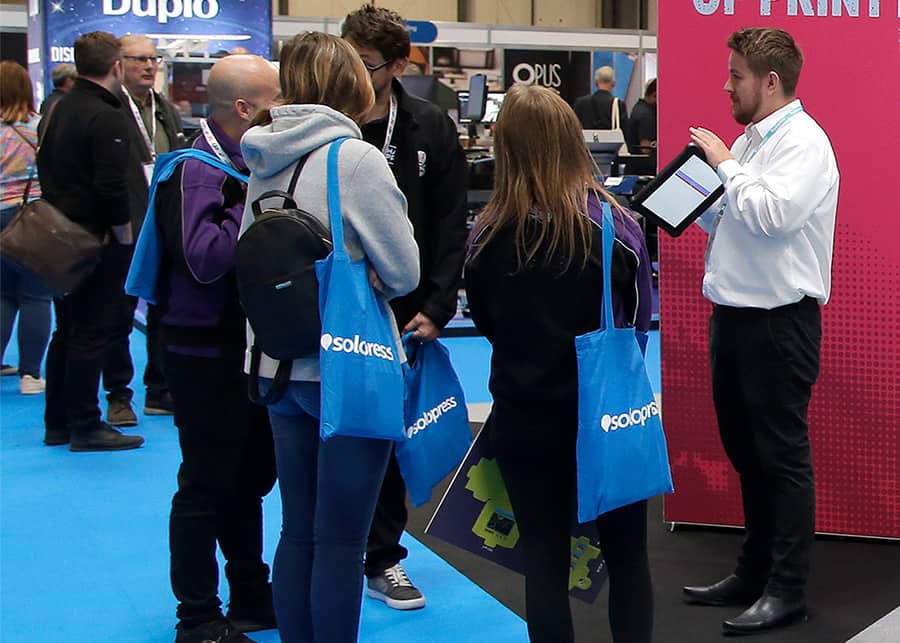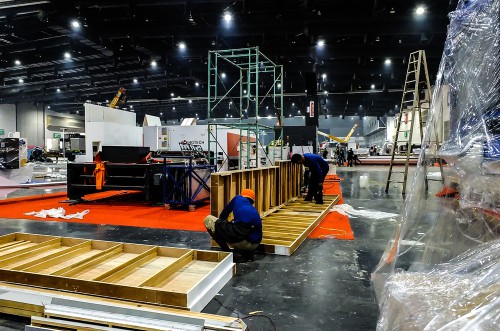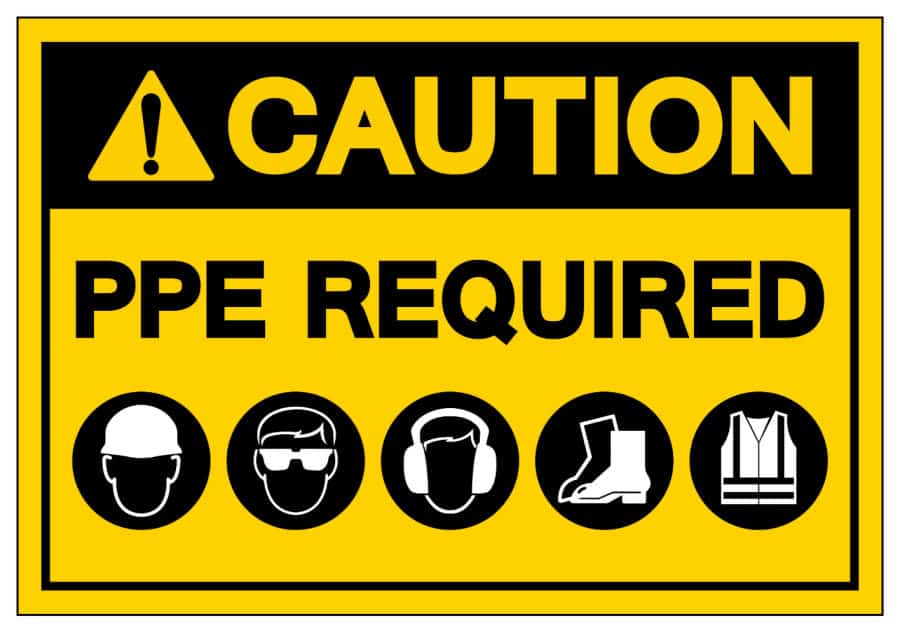If you’re planning to showcase your business at a trade show, preparation is key to make the most out of this exciting opportunity. Whether it’s your first time or your fiftieth, preparing for a trade show will give you the best chance to make valuable connections, gain exposure, and learn from others in your industry.
We surveyed our print customers and the responses from the seasoned exhibitors among them make for some pretty useful pointers. In addition, we’ve exhibited at a number of conferences and events ourselves. The Print Show in particular has taught us many lessons, so we also have plenty of experience to share. We put together everything we’ve learned for ourselves and from our customers and come up with our guide on how to prepare for a successful trade show.
Attend before you exhibit!
Before you plan your own exhibit, experience a trade show as an attendee. This first hand exposure gives you an idea of the crowd, the environment, and the expectations of exhibitors. It’s a valuable reconnaissance mission that will provide essential insights for your own exhibition strategy.
Set goals
Knowing what you want to achieve at the trade show is fundamental. Are you there to connect with existing customers, onboard new prospects, or introduce your brand to a fresh audience? Identifying your target audience is crucial in crafting your message, design, and overall approach. You’ll also want to prepare tools and strategies for capturing data from interactions to ensure every conversation potentially leads to a business opportunity.
Pick a show, pick a pitch
Choose a show that aligns with your goals and your target demographic. Try to secure a pitch that gets plenty of footfall. You should be able to source a map of the venue ahead of booking your pitch. Think about visitor routes, lines of sight and the locations of entrances, exits, refreshments and rest rooms to identify the best locations.
Set a budget
A vital part of preparing for a trade show is to set a budget. Consider what level of revenue you might gain from sales and orders secured during the show and through onboarding new customers and subscribers. This will help you set a budget that delivers a worthwhile return on your investment. Your budget should cover all costs, including display materials, promotional freebies, and workforce expenses. Transparency in budgeting helps prevent unexpected costs and ensures a smooth, stress-free event.
Stand design
Your stand is your mini storefront at the trade show, so its design is crucial. Visit our design blog for useful tips and ideas.
cdavies from Coed Cadw (The Woodland Trust in Wales) had this to say:
Really consider the space you have booked – try to envisage how everything is going to fit into the space, including staff and visitors. Don’t forget about secure storage space for coats, bags etc as well as spare leaflets etc.
For stand concepts and design tips, we have two handy blog articles for you to explore. One covering designing for shell schemes and small spaces, and for the ambitious exhibitor, five expert tips for bespoke trade show stands.
Prepare your materials

Bring along both promotional material that tells your story and freebies that attendees will appreciate. These gifts not only draw people to your booth, but they also serve as reminders of your brand once the show is over.
Basics like Business Cards and a Leaflet or Brochure explaining your current offering are must-have items.
Cotton Totes make for great goodie bags, and branded Pens or Notebooks are bound to get plenty of use. Beyond that, branded Sweets or printed Promotional Products can become customised gifts for them to remember you by.
Social media
While you’re preparing for a trade show, start spreading the news about your attendance ahead of time. Use relevant hashtags that exhibitors and event organisers are using to increase visibility.
Engage visitors
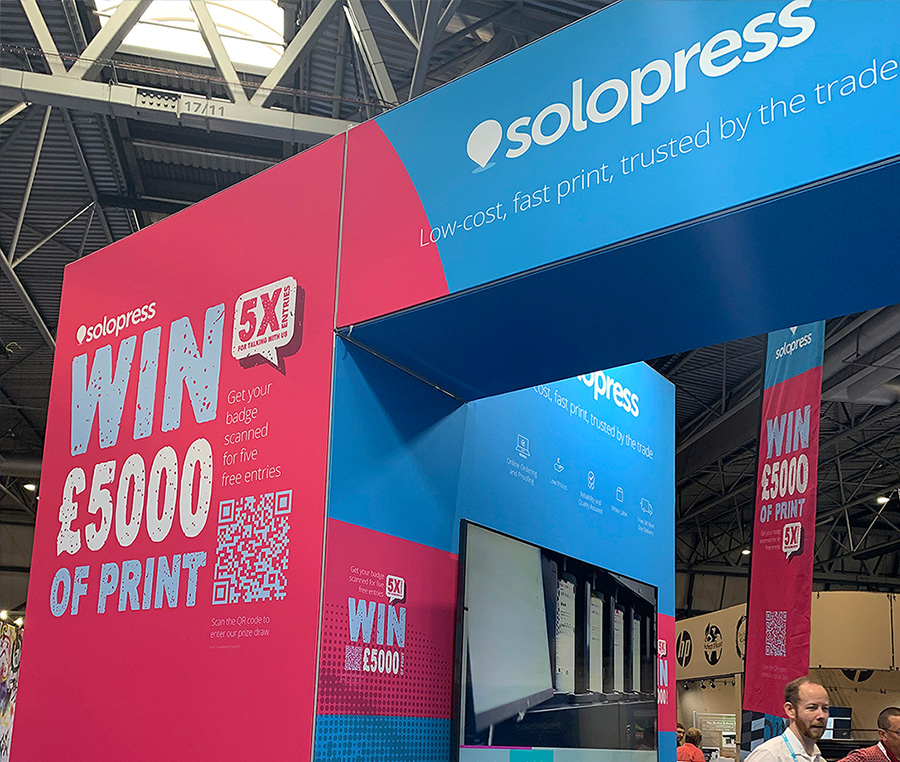
Consider hosting a game or competition at your booth. Not only will this engage visitors, but it can also be a valuable tool for gathering contact information and other data.
Pick your team and brief them
Choose a team that is enthusiastic, knowledgeable, and personable. Brief them about the goals, expectations, and schedule for the trade show.
Rehearse
Practice for a trade show by setting up your displays and and running through your interactions before the event. This can help you spot potential issues and streamline your actual set-up process.
Tails & Trails Veterinary Physiotherapy got in touch to say this:
Do a practice run of setting up outside so you don’t waste time rearranging when you get there.
As well as rehearsing your set-up, its worth running through some role-playing exercises with your team so that they’re comfortable pitching to visitors. Note this advice from S2 Design and Advertising:
Do some sales practice. You need to be able to convey stuff quickly and simply – an elevator pitch that does not sound too rehearsed or robotic.
Demonstrations
If your product is tangible, demonstrations should be straightforward. However, if your product or service is more abstract, like software or large machinery, you’ll need to think creatively about how best to demonstrate its benefits.
Research and reach out
Look into the attendees and other exhibitors. Consider reaching out ahead of time and even scheduling appointments with key contacts during the event.
Logistics
Consider your travel arrangements, parking, and accommodation well in advance to prevent last-minute stress.
Look after your team
Keep your team hydrated, nourished, and motivated. Their welfare will directly influence their effectiveness, so ensure they are well cared for.
Special Requirements for set-up
Before the trade show flings open its doors and the glamour and clamour of the event get underway, the set-up process is often a very different story. Depending on the venue and the nature of your exhibition, certain safety requirements may need to be met during the setup and breakdown phases.
If you’re going to be setting up on-site before the public is admitted, you might be working in a construction-like environment. Large installations, heavy equipment, and a bustle of activity can create hazards. To mitigate these, many venues will require you to wear personal protective equipment (PPE), particularly during the set-up and breakdown periods.
Here are some common items you might need:
High-Visibility Clothing
A hi-viz vest or jacket can help ensure you are seen amongst the hustle and bustle of the setup. This is particularly important if you’re working around heavy machinery or moving vehicles.
Hard Hat
If there’s a risk of falling objects or you’re working in an area with overhead loads, a hard hat may be required. Check with the venue or event organiser about this requirement.
Steel Toe Boots
When setting up, you may be handling heavy objects. Steel toe boots can protect your feet from potential accidents and are a standard piece of safety equipment in potentially hazardous environments.
Gloves
If you’re handling heavy or potentially sharp objects during setup, safety gloves can protect your hands from cuts, splinters, and abrasions.
Ear Protection
In some cases, the setup process may involve loud machinery or tools. In such instances, ear protection such as earmuffs or earplugs can be necessary.
Safety Glasses
When working with tools or materials that may produce flying debris, safety glasses can protect your eyes.
In all cases, it’s crucial to confirm any special requirements with the event organiser well in advance of the show. They will be able to provide a list of necessary safety gear, as well as any other site-specific requirements. Don’t overlook these specifications – not only are they necessary for your safety, but failing to comply can also result in delays or fines.
Remember, each trade show is unique. The special requirements for one might not apply to the next. Always do your research and prepare accordingly to ensure a smooth, safe, and successful event.
The Final Prep
And finally, here is a checklist to keep your preparations on track:
-
Goals for the event
-
Target audience
-
Budget
-
Stand design
-
Promotional materials
-
Social media plan
-
Engagement strategy
-
Team selection and briefing
-
Rehearsal
-
Demonstrations
-
Research and outreach
-
Logistics
-
Make yourself aware of special requirements eg. PPE
-
Team welfare
With diligent preparation and a clear vision, you’re far more likely to enjoy a successful trade show. Remember that each event is a learning opportunity. So, immerse yourself in the experience, soak up as much knowledge as you can, and most importantly, enjoy the journey! While you’re preparing for a trade show, stock up with Exhibition and Conference Printing from Solopress.


